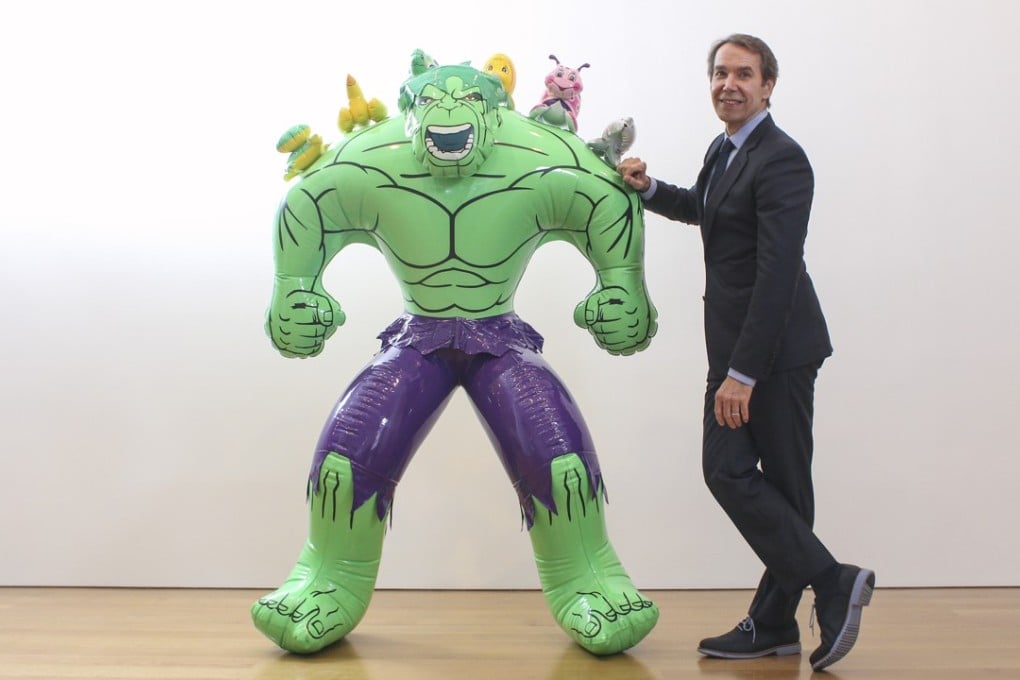From porn-star wife’s nether regions to Balloon Dogs: Hong Kong-bound Jeff Koons talks ‘plastic art’, selfies and Art Basel
The polarising perfectionist and blockbuster creator muses on the roles of viewer and creator ahead of an appearance at David Zwirner’s Art Basel booth

For an artist whose reputation is built on large-scale spectacle – think of those colossal canines, Puppy (1992) and Balloon Dog (1994), or the humungous-limbed Seated Ballerina (2017), or even his gigantic Bouquet of Tulips (2016) currently on offer to Paris, about which that city is being somewhat sniffy – there is little pizazz about the entrance to Jeff Koons’ New York workplace. On a chilly February afternoon, the West Chelsea street is full of sanitation trucks and storage spaces. “Private” states a blank door at the river end, plus a single clue: “Studio”.
Inside, it is deeply quiet. Koons is a hands-free – though emphatically not hands-off – artist. Many years ago, on a summer job, he damaged his hand in a machine and worried he would get arthritis. This, plus a taste for Marcel Duchamp, led him on the path of what he calls “the ready made”.
So the initial creative concept (say, toy rabbit – except shiny!) is his. The desire for perfect execution is his. But the physical work is done by assistants, of whom he has had many. Later, I ask for a current headcount, and he says, vaguely, “130”, but that cannot be quite right because the previous time we met, in November 2014, when he had a Gagosian show in Hong Kong, he gave the same figure and, according to news reports, he has cut back since then. That was the year he was No 7 on ArtReview magazine’s Power 100 list. Now he’s at No 54.

And yet when he arrives, he elects to conduct our conversation in public, at a work bench in the room of the five toilers. As we sit down, facing each other, something bothers him. There’s a nanosecond ripple of discomfort. He extracts a sheet of white paper from a nearby pile and places it down carefully, close to his right elbow. When I look underneath, it’s hiding a coffee-cup ring.
If you met him in the street – smiling, earnest, eager to convince you – you might think he was a missionary